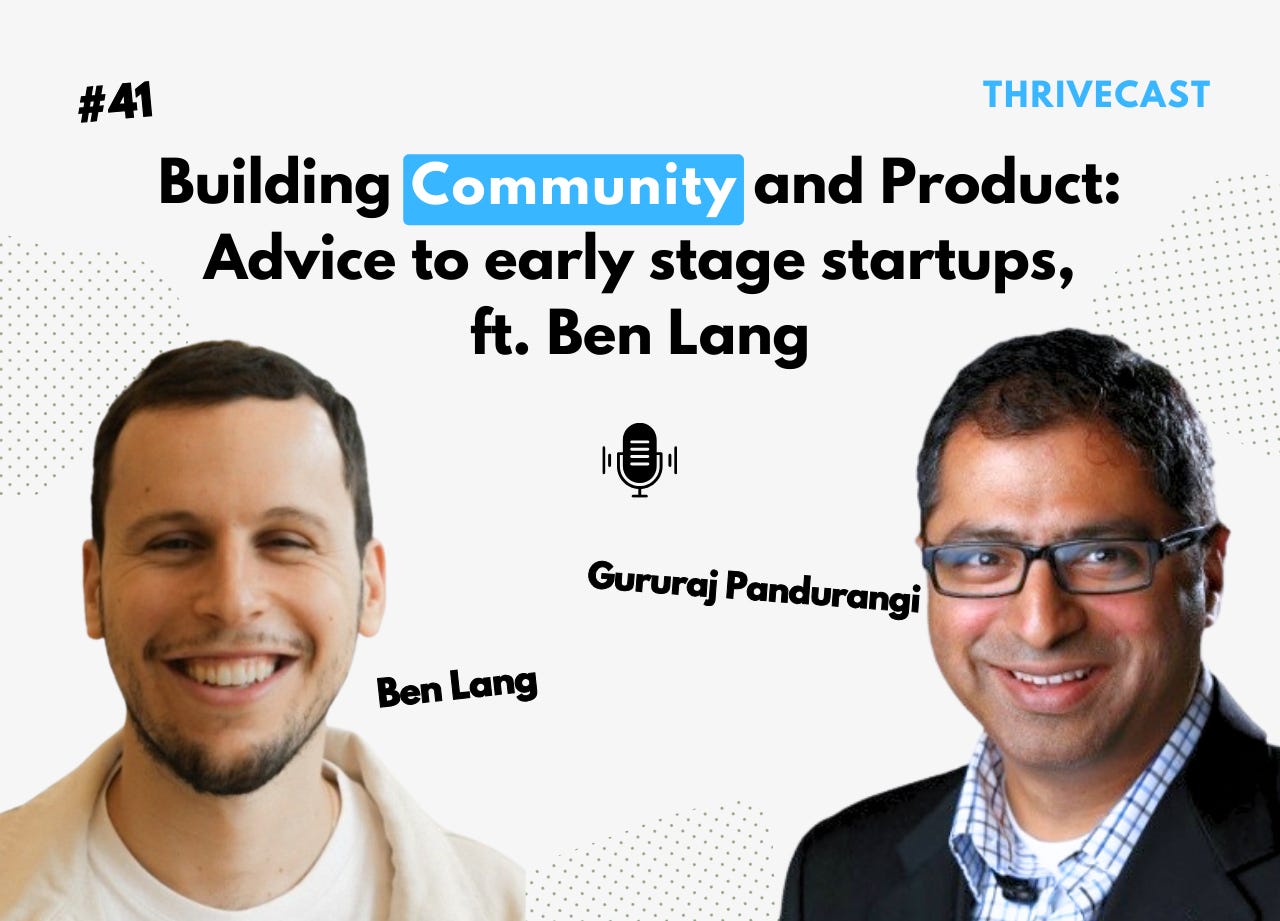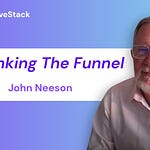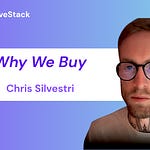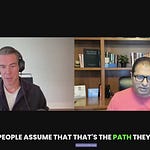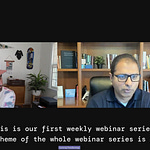In this episode, we explore the intricate relationship between building a community and developing a product, focusing on advice tailored for early-stage startups. We are thrilled to have Ben Lang, a renowned figure in community leadership and a seasoned entrepreneur, as our guest today.
Ben brings a wealth of experience from his time at Notion, where he played a pivotal role in community building. Beyond his work at Notion, Ben has ventured into angel investing and continues to foster communities in various capacities. His journey offers invaluable insights for startups aiming to balance product development with community growth.
Listen now on Apple, Spotify, Castbox, Google and YouTube.
Defining Community and Its Importance
A thriving community is more than just a group of users; it's a collective of individuals bound by shared values and interests.
For startups, understanding this fundamental concept is crucial. A strong community can serve multiple purposes, from driving user acquisition and retention to providing valuable product feedback and support.
Ben Lang emphasizes that the essence of a community lies in the common ground its members share. Whether it's a passion for a product, a mutual goal, or shared experiences, these connections form the foundation of a successful community. For companies, especially those in the early stages, leveraging these shared values can create a powerful support network that fosters growth and innovation.
Early-Stage Community Building
Building a community before having a fully developed product can be a daunting task. For early-stage startups, the journey often begins with joining and learning from existing communities.
Learning from Existing Communities: Startups can benefit greatly by engaging with existing communities to gain insights and conduct market research. For example, Notion initially struggled to build a community and took a two-year hiatus to rebuild their product from the ground up, returning to launch on Product Hunt with a renewed focus.
Defining the Community's Purpose: A community is more than just a user base; it's a network of individuals with shared values and interests. For Notion, the community was driven by users who wanted to monetize their templates and share their learnings. This shared purpose helped build a robust ecosystem that supported and promoted the product.
Achieving Product-Market Fit: It's essential to have some semblance of product-market fit before attempting to build a community. Without a product that people find valuable, creating a sustainable community is challenging. Startups should focus on developing a product that meets a genuine need and then leverage that product to foster community growth.
By following these steps, startups can lay a solid foundation for a thriving community even before their product is fully developed.
Strategies for Building a Community
Developing a successful community around a product involves strategic planning and execution. Ben Lang outlines a step-by-step process that can help startups create and sustain a vibrant community:
Step 1: Leverage Existing Platforms
Utilize platforms where your potential users already congregate.
Engage with these communities to gather feedback and spread the word about your product.
Step 2: Create Value for Members
Offer exclusive content, early access to new features, or opportunities to influence product development.
Example: Notion created a template gallery, allowing users to share and discover useful templates, adding significant value to their community.
Step 3: Encourage Organic Growth
Foster genuine interactions and connections to allow the community to grow organically.
Avoid forcing or overly structuring the community, as this can disengage members.
Step 4: Differentiate Between B2B and B2C Communities
Understand that building communities for B2B products can be different from B2C products.
Example: Salesforce’s Trailblazers program focuses on professional development and product training for their B2B community.
Step 5: Secure Support from Leadership
Ensure buy-in from the leadership team to view community building as a long-term investment rather than a short-term marketing tactic.
Step 6: Allocate Resources
While community building doesn't necessarily require a massive budget, dedicating resources—both in terms of personnel and finances—can significantly impact the success of your community efforts.
Practical Advice and Frameworks
Practical Advice
Here are some key pieces of advice from Ben Lang:
Establish Long-Term Vision: Define the long-term goals of your community, whether it's for user acquisition, support, or product feedback.
Start Small and Scale Gradually: Begin with small, manageable initiatives to test and learn what works best, and scale successful strategies gradually.
Foster Authentic Interactions: Encourage genuine interactions and avoid overly commercial approaches to build trust within the community.
Measure Impact Regularly: Track the impact of your community-building efforts using metrics such as engagement rates, user growth, or support ticket deflection.
Be Resource-Efficient: Focus on high-impact, low-cost initiatives like online meetups, social media engagement, and user-generated content.
Adapt and Iterate: Continuously adapt and refine your strategies based on feedback and changing needs.
Framework for Community Building
A structured framework can guide startups through the process of building a community effectively. Here’s a simplified framework:
Goal Setting:
Identify the primary objectives of your community (e.g., customer support, brand loyalty, user acquisition).
Set measurable goals to track progress and success.
Audience Identification:
Define your target audience and understand their needs and interests.
Conduct market research to identify potential community members and influencers.
Platform Selection:
Choose the appropriate platforms for community engagement (e.g., social media, forums, email newsletters).
Ensure the platforms align with your audience’s preferences and behaviors.
Content Strategy:
Develop a content strategy that provides value to community members (e.g., tutorials, user stories, exclusive insights).
Schedule regular content updates to keep the community engaged.
Engagement Tactics:
Implement tactics to encourage participation and interaction (e.g., Q&A sessions, contests, user-generated content).
Recognize and reward active community members to foster loyalty.
Resource Allocation:
Allocate dedicated resources, including personnel and budget, to support community-building activities.
Ensure there is ongoing support and commitment from the leadership team.
Monitoring and Evaluation:
Regularly monitor community activities and engagement levels.
Use analytics and feedback to evaluate the effectiveness of your strategies and make necessary adjustments.
Scaling and Expansion:
Once the community is established and stable, explore opportunities for growth and expansion.
Introduce new initiatives and collaborations to keep the community dynamic and evolving.
Challenges and Pitfalls
Building a community is a rewarding but challenging endeavor. Ben Lang highlights several common challenges and pitfalls that startups should be aware of:
Lack of Authenticity: Forced or overly commercial interactions can disengage community members. Authenticity is key to building trust and fostering genuine connections.
Insufficient Product-Market Fit: Without a product that people find valuable, it is difficult to sustain a community. Ensure that there is some semblance of product-market fit before investing heavily in community building.
Inconsistent Engagement: Regular engagement is crucial. Inconsistent or sporadic interactions can lead to a drop in community interest and activity.
Over-Reliance on a Few Members: Relying too heavily on a few active members can create an imbalance. Encourage broader participation to create a more resilient community.
Resource Constraints: Community building can be resource-intensive. Ensure that there are dedicated resources, including personnel and budget, to support ongoing community efforts.
Unclear Goals: Without clear goals and objectives, community-building efforts can become unfocused. Define and regularly reassess the goals of your community.
Conclusion
Building a community around a product involves strategic planning, continuous engagement, and understanding the audience’s needs and interests. Key takeaways include leveraging existing platforms, creating value for members, fostering organic growth, differentiating strategies for B2B and B2C communities, securing leadership support, allocating resources, and regularly monitoring and evaluating efforts.
By focusing on these principles and avoiding pitfalls such as lack of authenticity and unclear goals, startups can build a resilient and engaged community that supports long-term growth and success.
Key Timestamps
(00:00) Introduction to the episode and guest, Ben Lang
(01:21) Defining community and its importance
(03:45) Early-stage community building: challenges and strategies
(06:12) Notion's journey and market research
(08:00) Key strategies for building a community
(10:45) Differences between B2B and B2C communities
(12:30) Practical advice for startups on community building
(15:50) Framework for effective community building
(18:10) Common challenges and pitfalls in community building
(21:05) Importance of authenticity and consistent engagement
(23:30) Conclusion: Key takeaways and final advice from Ben Lang
Where to Find the Guest:
LinkedIn: Ben Lang
Where to Find the Host:
LinkedIn: Gururaj Pandurangi




